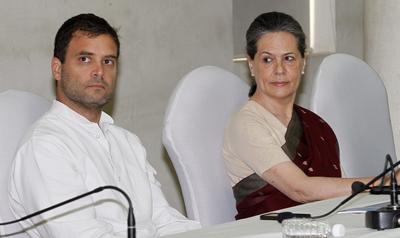The outcome is astonishing. In terms of seats, the resurgent Bharatiya Janata Party (BJP) exceeded the predictions of all but one exit poll. By winning 283 seats the BJP has assured itself a majority of the lower house even without its allies, the first party in 30 years to do so; while the INC dropped to an all-time low of 44 — too low to meet the minimum threshold required to be recognised as the official opposition party. The BJP’s allies alone won nearly as many seats as the INC and its allies together. Three former INC factions that broke away to form regional parties in the last 15 years collectively won more seats than the INC, and two regional parties each have almost as many seats as the INC. Even more stunningly, the INC dropped to 19 per cent of the national vote, a historic low, while the BJP scored its highest vote share ever with 31 per cent.
Some analysts have begun to suggest that the BJP’s victory is being overblown — that with only 31 per cent of the vote the party’s victory in 2014 is really the mirror image of its loss in 2009, when the INC got 28 per cent of the vote and the BJP got 18 per cent. The trouble with this analysis is that it ignores how thoroughly this election has reversed the trajectory of the last 15 years, since the BJP’s first government. All through this period the INC has remained the larger party in terms of vote share, with a stable vote share of between 25 and 28 per cent of the vote. While considerably lower than its average vote share of about 43 per cent in earlier decades, this was enough to build a coalition around in the 2000s.
Moreover, since 1998 when the two parties were nearly tied in votes and the BJP formed its first coalition government, the vote shares of the two have been diverging to the INC’s advantage. Not only is this the first election in which the BJP has exceeded the INC’s vote share —by a margin of 12 per cent — but it sharply reverses the trajectory of the last three elections, in which the BJP’s vote share declined and the INC’s increased over the previous election every time.
The result is a situation that puts in question the survival of the national identity of India’s oldest party — and one of the world’s oldest. Although the INC remains a viable political force (with a fifth of the vote and a continued strong presence in about half of the country’s states) it is vulnerable to disintegration in a way that the BJP, which in 1984 fell to just two seats in parliament, never was. There are four related reasons for this vulnerability.
The principal threat comes from the party’s chronic inability to develop mechanisms that allow viable and popular leaders to rise from within. The unwillingness of rival regional politicians to let one of their own rise to the top position has led the party to both choose relatively weak prime ministers at some times and to gravitate toward a member of the Nehru-Gandhi dynasty at others. The continued dominance of the dynasty is as much a consequence as a cause of this basic organisational weakness.
The dynasty is the second vulnerability. Today it is clear that it has outlived its usefulness. Although the party has governed 15 of the last 25 years without a Nehru-Gandhi as the prime minister, the family has remained at the centre of the party’s organisation, and the dynastic principle of leadership returned in this election through the promotion of Rahul Gandhi as the de facto prime ministerial candidate. It seems clear that this is no longer acceptable to the vast majority of Indian voters. But it is also unclear if the INC is capable of generating an alternative method of leader selection.
The third threat is a direct result of the second. The dominance of the dynasty has made sycophancy a surer route to power than popularity with the electorate. Consequently, powerful regional leaders break away when they are feeling sidelined by the national leadership, often retaining the word ‘Congress’ in their name to signal their heritage. The success of these parties in recent years and especially in the recent election could encourage more of the same. Much depends on how skilfully the central leadership is able to accommodate the more dynamic and popular state leaders and convince them that their route to power lies through a united INC.
The final reason relates to the very strength of the BJP’s victory. In the past, when the BJP won power, it was at the head of a coalition. There was the chance that the government would fall and fresh elections be called. For state-level politicians this was a reason to stay with the INC in the hopes of riding to power. This time, it is very difficult to see the government failing to last five years. State elections are almost certain to come before then. For state level politicians that makes associating with a declining national Congress ‘brand’ may be less attractive than forming a regional party.
In short, to focus on the BJP alone is to miss the real significance of this election, which lies in the collapse of the INC. But the demise of the INC is not inevitable. It is possible to sketch a scenario in which the many regional parties that failed to get a seat, despite a respectable vote percentage, gather around the INC, or even a scenario in which former INC factions reunite with the parent party once their place in the new order is assured. However, all these scenarios depend on reforming and strengthening the internal workings of the INC. India’s grand old party is facing a crisis unlike any other in its history.
Arun R. Swamy is an associate professor of political science at the University of Guam.

